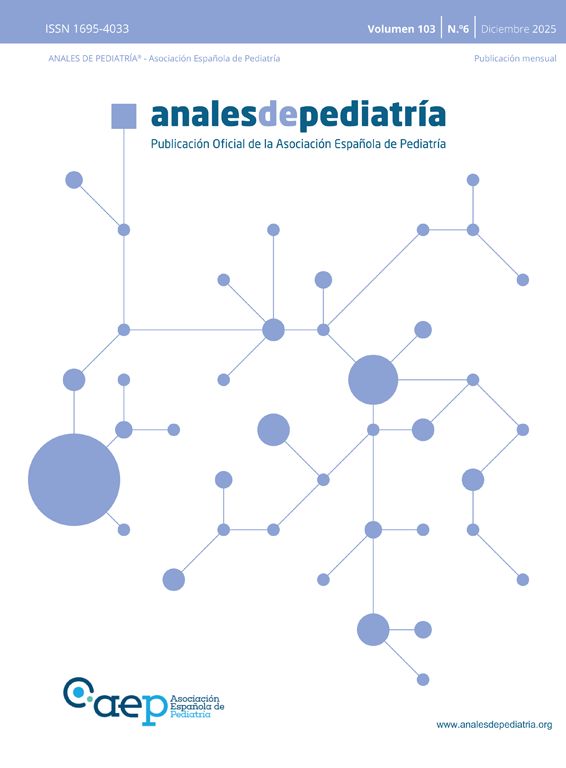We describe the case of a female patient aged 14 years, with no history or disease of interest, who presented with bilateral conjunctival hyperaemia (Fig. 1) and painful blisters measuring 3 cm in diameter over the lips, soft palate and gums (Fig. 2). The patient was afebrile and reported not having taken any pharmaceuticals.
The blood tests performed due to suspicion of reactive infectious mucocutaneous eruption revealed mild neutrophilia, a C-reactive protein level of 18.5 mg/L and positive IgM and IgG antibodies for Mycoplasma pneumoniae. The polymerase chain reaction test in a nasopharyngeal aspirate sample was negative for M. pneumoniae, Chlamydia pneumoniae, influenza and other viruses.
Due to pain and refusal to eat, the patient was admitted for analgesia and intravenous therapy. The isolated presence of IgM antibodies does not suffice for diagnosis of Mycoplasma infection, as it can remain elevated for months.1 However, a negative PCR test on nasopharyngeal aspirate does not rule out this aetiology (sensitivity of 45%–56%).1 In the absence of an alternative diagnosis, given the presence of compatible symptoms, treatment was initiated with oral azithromycin at a dose of 10 mg/kg and methylprednisolone at a dose of 40 mg/day for 5 days.
During the hospital stay, the patient developed red-rimmed bull’s-eye lesions on the chest and back (Fig. 3). Due to the presence of diffuse punctate keratitis, the patient received treatment with an ophthalmic corticosteroid ointment and an antibiotic, which achieved an excellent outcome.
The mucocutaneous eruption induced by M. pneumoniae is characterised by severe mucositis predominantly affecting the oral cavity, conjunctiva and genital mucosa. It is now considered a distinct disease outside of Stevens-Johnson syndrome or toxic epidermal necrolysis on account of its aetiology, treatment and excellent prognosis.2,3 In the case presented here, there was a high level of suspicion due to the epidemiological context, compatible clinical manifestations and favourable outcome of treatment, in addition to the serological test results.
FundingThis research did not receive any external funding.









